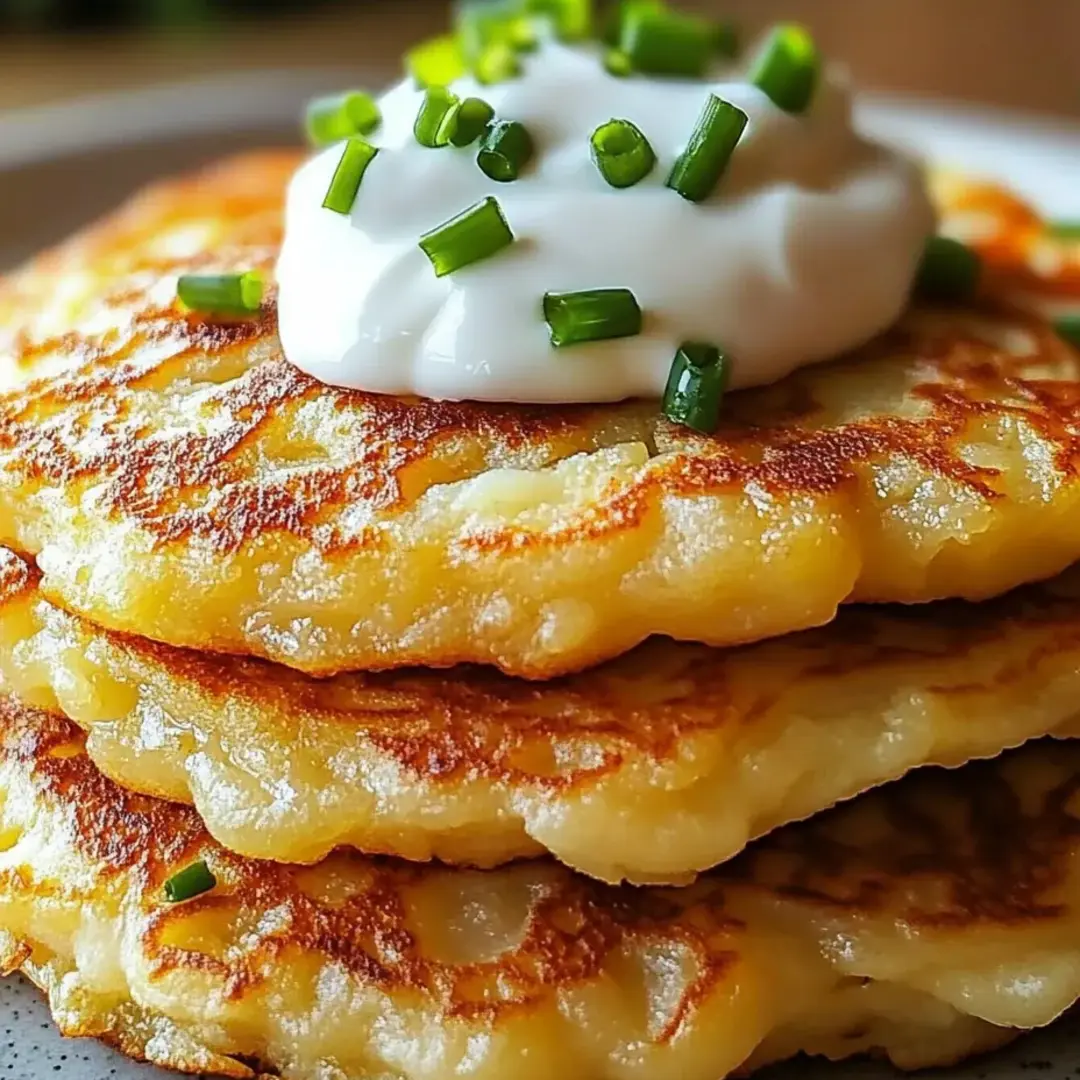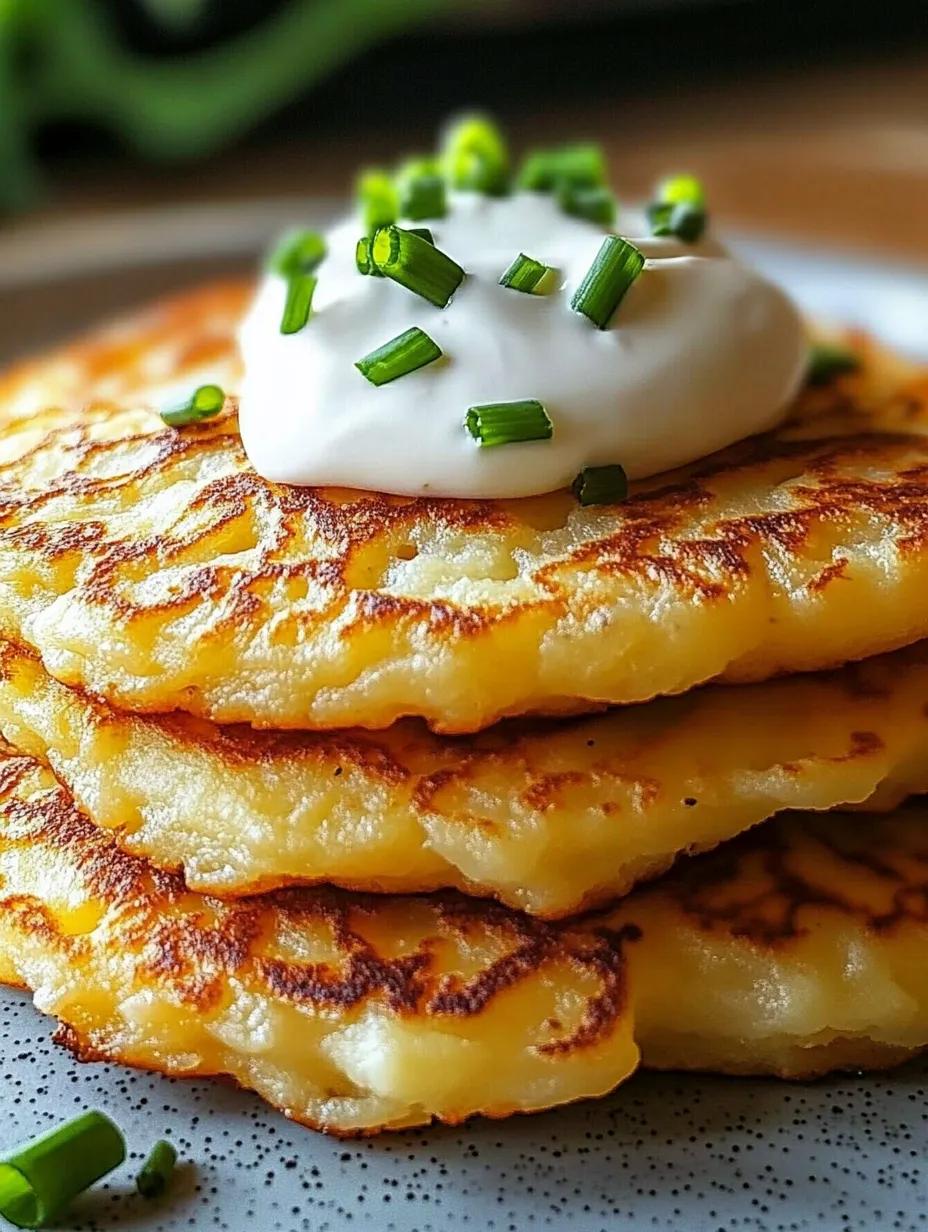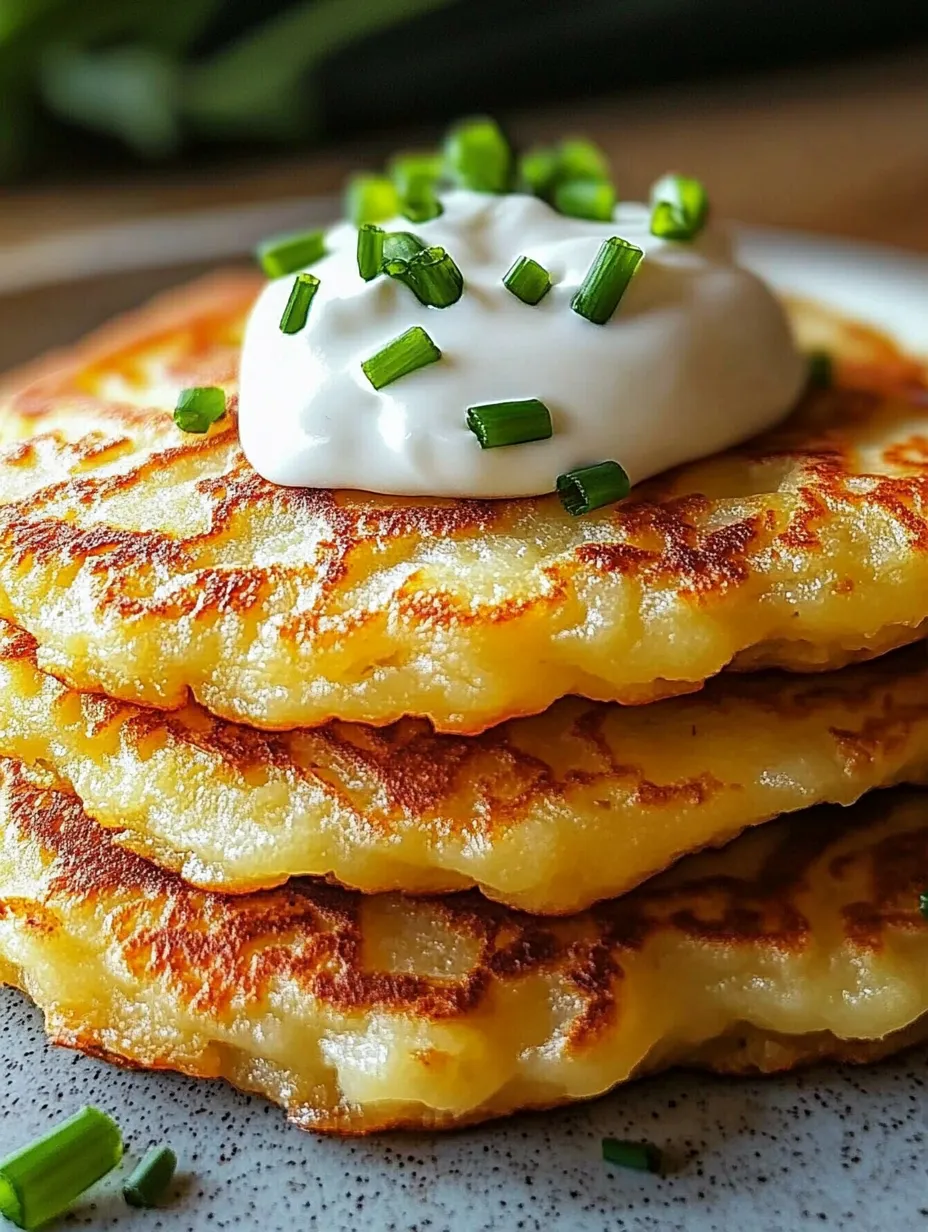 Pin it
Pin it
Irish boxty transforms humble potatoes into something truly magical through a unique preparation that combines both raw and cooked potatoes in one delightful pancake. This traditional Irish dish delivers the perfect textural contrast - a crispy golden exterior that gives way to a tender, flavor-packed interior. Dating back centuries in Irish culinary tradition, boxty celebrates the versatility of the potato in a dish that's simple enough for everyday meals yet special enough for St. Patrick's Day celebrations or whenever you're craving a taste of authentic Irish comfort food.
I first discovered boxty during a trip to Dublin where I ordered it at a small, family-owned restaurant. I was immediately struck by how something so simple could deliver such satisfaction. The crispy-yet-tender texture and humble ingredients captured the essence of Irish cooking. After returning home, I spent weeks perfecting my recipe, and now it's a regular weekend breakfast tradition in our house. My children ask for it constantly, and guests always leave with the recipe in hand!
Essential Ingredients
- Raw potatoes: Create the signature texture with their starch content and moisture. Choose starchy varieties like Russets for their ability to crisp up nicely when grated and fried.
- Mashed potatoes: Provide the creamy interior texture that balances the crispy grated potatoes. Leftover mashed potatoes work beautifully, or make fresh ones specifically for this recipe.
- All-purpose flour: Binds the pancakes together without making them heavy. Measure by spooning flour into measuring cups and leveling off for accuracy.
- Buttermilk: Adds tanginess and helps activate the baking powder. Traditional Irish buttermilk is thicker than modern varieties, so adjust quantity as needed for proper batter consistency.
- Baking powder: Creates slight lift and airiness in the pancakes. Check that it's fresh for best results; baking powder loses potency after 6-12 months.
- Salt: Enhances all the flavors and is especially important when working with potatoes. Kosher salt provides better flavor control than table salt.
 Pin it
Pin it
Detailed Cooking Instructions
- Step 1:
- Prepare your potatoes properly – Begin with 1 cup of raw potatoes, peeled and finely grated. The size of the grate matters - use the small holes on a box grater for the right texture. Once grated, place the potatoes in a clean kitchen towel and squeeze firmly to remove as much moisture as possible. This crucial step prevents soggy boxty and helps achieve that perfect crisp exterior. Reserve the extracted potato liquid if you wish - some traditional cooks let it sit until the starch settles, then add the starch back to the mixture for extra binding power.
- Step 2:
- Create the perfect base – In a large mixing bowl, combine 1 cup of mashed potatoes (either leftover or freshly made and cooled slightly), the squeezed grated potatoes, 1 cup of all-purpose flour, 1 teaspoon of baking powder, and ½ teaspoon of salt. Mix these dry ingredients thoroughly with a fork or wooden spoon until evenly distributed. The mashed potatoes should be smooth but not overly rich with butter or cream, as this can make the boxty too soft.
- Step 3:
- Achieve ideal consistency – Gradually add ½ to ¾ cup of buttermilk to the potato mixture, stirring continuously. The amount needed varies depending on the moisture content of your potatoes and the thickness of your buttermilk. Add just enough to create a thick batter that's pourable but not runny - similar to a thick pancake batter. The batter should drop reluctantly from a spoon rather than pour in a stream. This consistency ensures boxty that holds together well during cooking while still developing a proper crust.
- Step 4:
- Master the cooking technique – Heat a heavy-bottomed non-stick skillet or cast iron pan over medium heat. Add about 1 tablespoon of butter or a mixture of butter and neutral oil (which helps prevent burning). Once the butter is melted and slightly bubbling but not brown, drop ¼ cup portions of batter into the pan, leaving space between each pancake. Use the back of a spoon to gently flatten each portion to about ½-inch thickness. The pancakes should sizzle gently when they hit the pan - if they don't, your pan isn't hot enough.
- Step 5:
- Achieve the perfect crust – Cook each boxty for 3-4 minutes on the first side, until the edges look set and golden brown spots appear on the bottom. Resist the urge to flip too early; proper browning develops flavor and ensures the pancake holds together. Flip carefully with a thin spatula and cook for another 3 minutes on the second side. The boxty should be golden brown on both sides with a crisp exterior that gives way to a tender middle when cut.
- Step 6:
- Maintain ideal temperature – As you cook multiple batches, wipe the pan clean between batches if needed and add fresh butter or oil. Maintain consistent medium heat - too hot and the outside will burn before the interior cooks; too cool and the boxty will absorb fat and become greasy rather than crisp. If making a large batch, keep the cooked boxty warm in a 200°F oven on a wire rack over a baking sheet to maintain crispness.
- Step 7:
- Serve at peak perfection – Transfer the finished boxty to plates and serve immediately while hot and crispy. Traditional serving options include a pat of good Irish butter melting on top, a dollop of sour cream, or even a drizzle of honey or maple syrup if you prefer a sweeter approach. For a savory meal, top with smoked salmon, crispy bacon, or sautéed mushrooms and herbs.
Serving Suggestions and Accompaniments
Boxty shines both as a star and as a supporting player. For breakfast, serve alongside eggs and Irish bacon or sausages. For lunch, top with smoked salmon and a dollop of crème fraîche with fresh dill. As a dinner side, boxty complements hearty Irish stews or roasted meats beautifully. I've found that a simple green salad dressed with vinaigrette offers the perfect fresh contrast to the rich, comforting flavors of boxty.
For a modern twist, try using boxty as a base for creative toppings – similar to blini or small flatbreads. Top with cream cheese and chives, caramelized onions and Cashel Blue cheese, or even pulled pork for fusion Irish-American fare. The neutral potato flavor provides the perfect canvas for both traditional and innovative flavor combinations.
Exploring Regional Variations
Like many traditional recipes, boxty varies across different regions of Ireland. In County Mayo, you might find boxty baked in the oven rather than fried in a pan. In Donegal, boxty might be formed into a loaf and sliced before frying. Some regions add grated onion or herbs to the batter, while others keep it strictly to potatoes, flour, and buttermilk.
 Pin it
Pin it
I've experimented with several regional adaptations and found that adding a tablespoon of finely chopped scallions adds a lovely subtle onion flavor, while a teaspoon of caraway seeds brings a traditional Irish flavor profile that pairs beautifully with cabbage dishes. Don't be afraid to make boxty your own while respecting its humble origins.
Understanding Boxty's Cultural Significance
Boxty holds a special place in Irish culture and history, particularly in the northern counties. The dish dates back to pre-famine times when potatoes were the staple food of Ireland. The clever combination of raw and cooked potatoes represents the resourcefulness of Irish cooking – using every bit of available ingredients to create something nourishing and delicious.
There's even an old Irish rhyme about boxty that speaks to its importance: "Boxty on the griddle, boxty in the pan, if you can't make boxty, you'll never get a man." While the sentiment may be outdated, it shows how essential these cooking skills were considered in traditional Irish households. Today, boxty represents the resilience and creativity of Irish cuisine.
I've discovered that using floury potatoes like Russets or Irish Rooster potatoes (if you can find them) makes a significant difference in achieving authentic texture. The first time I made boxty with the correct potatoes, the results were dramatically improved – crisper exterior with that perfect inner tenderness that makes boxty so satisfying.
My final thought on boxty is that it represents everything wonderful about traditional cooking – the ability to create something truly delicious from just a few humble ingredients. There's something deeply satisfying about connecting with culinary heritage through recipes that have sustained generations. While fancy ingredients and complex techniques certainly have their place in the culinary world, dishes like boxty remind us that some of the most delicious foods are also the simplest. Whether you're celebrating your Irish heritage or simply exploring world cuisines, boxty offers a delicious taste of Ireland's rich food culture that continues to bring joy to tables around the world.
Frequently Asked Questions
- → What is the difference between boxty and regular potato pancakes?
- Boxty is unique because it combines both raw grated potatoes and cooked mashed potatoes, while traditional potato pancakes or latkes typically use only raw grated potatoes. This combination gives boxty a distinctive texture that's crispy outside but softer and more cake-like inside.
- → Can I make boxty without buttermilk?
- Yes, you can substitute regular milk mixed with a teaspoon of lemon juice or white vinegar (let it sit for 5 minutes to curdle slightly). Plain yogurt thinned with a bit of milk also works well as a buttermilk substitute.
- → What kind of potatoes work best for boxty?
- Starchy potatoes like Russets or Idaho work well for the grated portion because they crisp up nicely, while waxier varieties like Yukon Gold make excellent mashed potatoes. Using a combination gives the best texture, but you can use any potato variety you have on hand.
- → How can I keep my boxty warm while cooking multiple batches?
- Place cooked boxty on a baking sheet in a 200°F (95°C) oven while you finish cooking the remaining batter. This keeps them warm without drying them out or making them soggy.
- → What are traditional toppings for boxty?
- Traditional Irish toppings include butter, sour cream, applesauce, or just a sprinkle of salt. Boxty can also be served as a savory dish with smoked salmon, bacon, eggs, or sautéed mushrooms, or sweetened with honey or maple syrup for a breakfast option.
